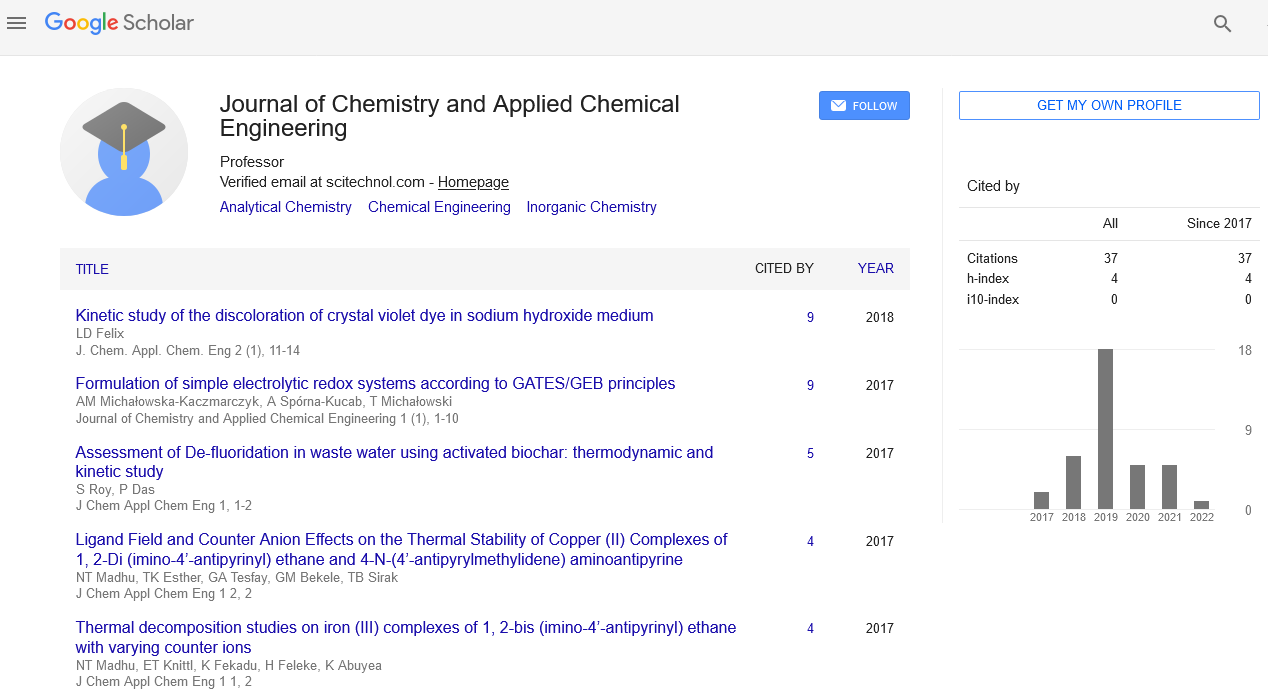Unusual approaches to the organization of chemical reactions in heterogeneous systems
Sharipov R.H., Utelbayev B.T., Gabdullin M.T and Suleimenov E.N
Kazakh - British Technical University, Republic of Kazakhstan
: J Chem Appl Chem Eng
Abstract
The latest experimental data in the world scientific literature provide a basis for the conclusion that M. Faraday’s views are correct on the effect of various physical factors on the nature and mechanism of chemical reactions. Since M. Faraday’s work was not attended by a division into “physics” and “chemistry”, this allowed the brilliant scientist to make generalizations that currently predetermine the development of natural science disciplines. Since M. Faraday’s work was not attended by a division into “physics” and “chemistry”, this allowed the brilliant scientist to make generalizations that predetermine the development of naturally-scientific disciplines. The key points in the development of the scientific understanding of natural science are the following provisions of M Faraday's works: the identity of the energy manifestations in the interaction of material objects and the discrete nature of the electric current. Developed without taking into account the work of M. Faraday, the theory allowed not to take into account the identity of energy manifestations in the interaction of material objects (hence the lack of work to determine the real mechanism of heat transfer between material objects). This circumstance influenced the lack of attention to the use of the discontinuity of the electric current for practical use. Meanwhile, the discrete nature of the flow of energy harbors unlimited possibilities for technical use. For example, we have shown that a change in a wide range of parameters and the shape of an electrical signal can promote unusual chemical reactions and physicochemical processes at the interface and in condensed systems. For example, we found that phase transitions in an oxide melt can occur without noticeable thermal effects. This confirms the conclusion made empirically about the dependence of the structure of a liquid not only on the chemical composition and temperature. Under the influence of electromagnetic fields, the conductivity of the melts may decrease with increasing temperature and change at a constant temperature. Crossed electromagnetic fields cause phase and quantitative division of melts, both synthetic oxide melts, and oxidesulfide multicomponent systems, etc. etc. The possibility of dissolving metallic molybdenum in alkaline solutions was experimentally established. Found features of this process. The dissolution rate is not proportional to the frequency of the current and the dissolution stops as the current frequency increases. Dissolution ceases at any current parameters and concentrations of potassium oxide in an aqueous solution at temperatures above 75 °C. The dissolution of molybdenum does not occur at any current parameters, if the concentration of potassium oxide exceeds 9%, etc., etc. These and our other experimental data can serve as a basis for creating effective technological processes.
The paradigm: the identity of energy manifestations in the interaction of material objects became obvious long ago, since any physical and chemical processes are accompanied by a sum of energy manifestations (for example, the burning of coal, wood, metals, etc.). Based on this postulate of M. Faraday, based on the analysis of a large amount of reference data and the achievements of modern science, which we consider in the complex of micro- and macroscopic properties of the material world, we prejudiced and substantiated the hypothesis that heat transfer is realized by elementary particles, which we conditionally called "Heat mains". A new elementary particle, the “thermal fluid,” clarifies the transfer of energy in the form of heat and makes it possible to uncover the physical meaning of thermal phenomena. According to the classical equations of thermodynamics and molecular - kinetic theory, the mass of the "heat-thermometer" was calculated and its velocity in various media. The basic research carried out at the Kazakh-British Technical University creates effective starting conditions for overcoming the current crisis in natural science.A report can be submitted to the Faraday's Laws of Electrolysis section.
Biography
 Spanish
Spanish  Chinese
Chinese  Russian
Russian  German
German  French
French  Japanese
Japanese  Portuguese
Portuguese  Hindi
Hindi 